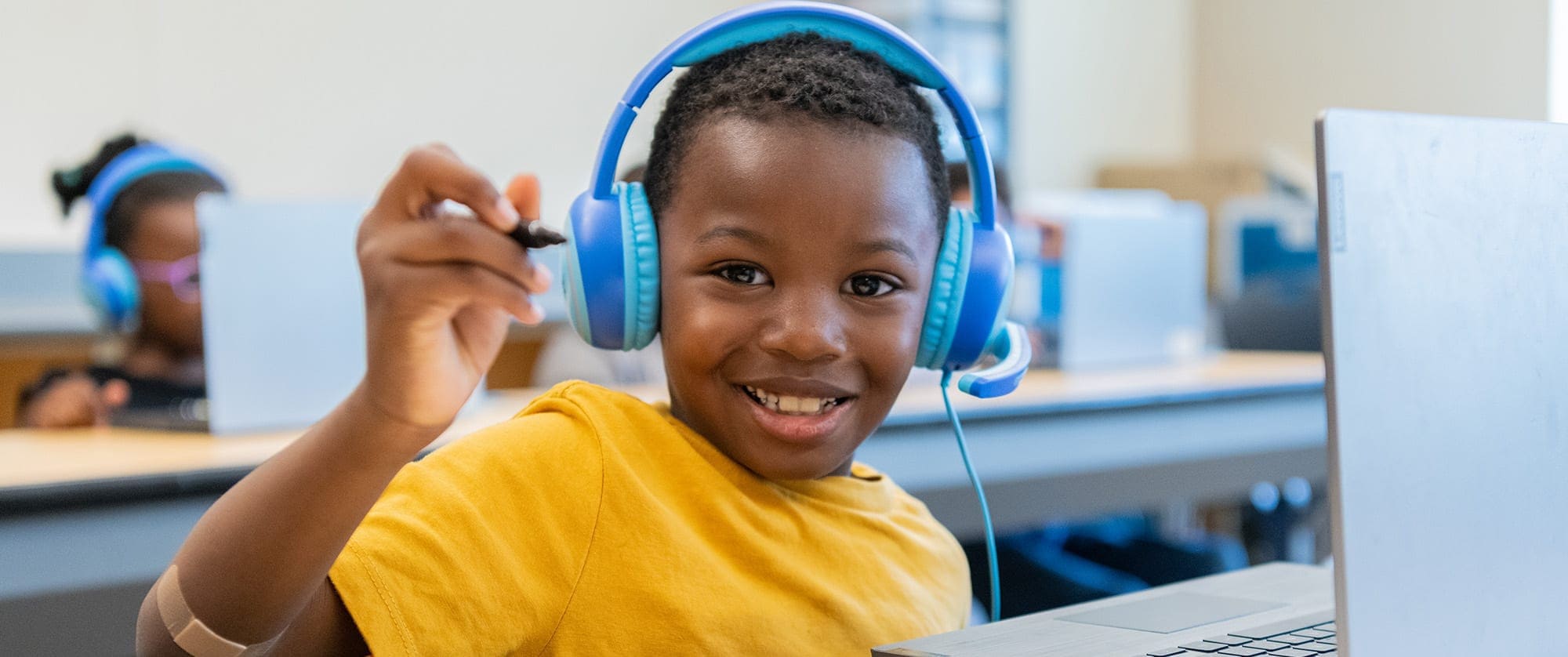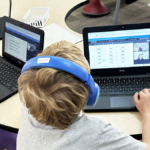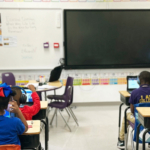The trickiest moments in tutoring can have nothing to do with teaching the curriculum. Keeping students engaged and focused is the number one challenge most tutors tell us they need support with. We interviewed seasoned members of Ignite’s Literacy Team—Erin Johnson, Amanda Thrower, and Brittny Tennessee—to get their expert advice and engaging ideas you can add to your tutoring toolbox:
Q. Before we dive into tips and tricks, what does it mean to successfully engage students?
Amanda:
A lot of people think engagement is about how to make the lesson fun. That’s not necessarily what we mean by engagement. Engagement is how you pull the student in and make them an active participant throughout the lesson.
Q. What are some of the key things tutors can do right at the start to set the stage for positive student engagement?
Brittny:
Start off by ensuring you set a strong foundation. The first day is a get-to-know-you day for building a personal relationship with students so they feel connected. You can’t assume students know how to interact in an online space, so give explicit instructions about what it looks like. Similar to how we give explicit instructions with curriculum, it’s important to do the same with behavior. Review Student Culture Norms with students on the first day, and refer back to them regularly while holding students accountable to those norms.
Amanda:
Checking in is important at the start of every session. Use a simple question such as, “How is your day going?” to get information about your student’s mood and mindset, so you can adapt accordingly.
Brittny:
Placing your student in the right protocol is key for engagement. If it’s too easy they might get bored, or too difficult, they might try to opt out.
Amanda:
Remember that we’re here to do reading; there isn’t a choice. Think about your language when starting your lesson. For example, instead of using questions like, “Can you turn your camera back on?” say, “I need you to turn your camera back on.” Be clear on what the non-negotiables are.
Q. What are helpful tricks tutors can use when a student is clearly distracted?
Brittny:
Diagnose why your student is distracted or opting out. We often talk about the skill gap vs. the will gap. Is your student opting out because they don’t want to do it (will gap), or are they genuinely struggling because they don’t know how to do it (skill gap)? You can understand which it is by modeling the answer first. For example, sound and blend first and then have the student copy after you. If the student says something wrong, instead of moving forward, ask the student to try again to see if they really don’t know and are struggling (skill gap). Show empathy and use statements like, “I know this is hard and I believe in you. Let’s keep trying.”
Erin:
You can engage students by incentivizing small moments in the lesson. For example, if your student enjoys reading by themselves, say, “We’re going to sound and blend first, but then you’ll have the opportunity to read all on your OWN.” This helps them understand that they have to do what is being asked and THEN they get to do the activity or practice that they are more excited to do. They receive the (rigorous) incentive after they meet your expectations.”
Amanda:
If you don’t know your student well enough to know what they like, ask one question a day during your check in to get to know them. It’s never too late to build that relationship and to find out what’s motivating for them.
Brittny:
Try giving your student small choices. For example, during the partner reading portion of shared reading, “Do you want to go first or do you want me to go first?” Or “What color do you want me to use today?”
Erin:
We also use cheers. You can bring their eyes back to the screen with, “After we do this, I’m going to teach you a fun cheer.” You can even let the student make their own cheer or virtual handshake. The cheers can then be used as a call and response. For example, if you teach “1, 2, 3 eyes on me!” then your student can respond, “1, 2, eyes on you!” It’s a fun way to redirect behavior and make your student an active participant in the process.
Amanda:
You can turn every part of the lesson into a game. It can be something simple that doesn’t take time. For example, if they can finish more than 5 words, they get a point. If they follow your directions, they get a point! If they read the words accurately, they get a point. Everything can be in service of earning points, stars, or whatever marker you want to use. Set a goal for the number of points to earn that day. Challenge students to see if they can earn more points tomorrow.
Q. Are there any resources Tutors can use for more engagement ideas?
Erin:
Yes! Ignite Engagement Activities and “Zaretta Hammond on Equity and Student Engagement” are both excellent resources. Tutors should reach out to their Literacy Specialist for tools on how to address negative behavior or to discuss appropriate incentives for students who need them as a scaffold.
Q. What are some life lessons you’ve learned about engagement from your years of working as an educator?
Erin:
Most students wake up at 6am and don’t make it to bed until 8pm. They are doing something really hard when learning to read. If students need to have feelings during the session, make that space. Prioritize their emotional and physical safety over everything. Take care of yourself so you can show up as your best self during the session without any ego.
Brittny:
Be flexible. What worked yesterday might not work today. Anything that we share as a technique, put it in the toolbox, but know that the same strategy may not work every day or for every child.



